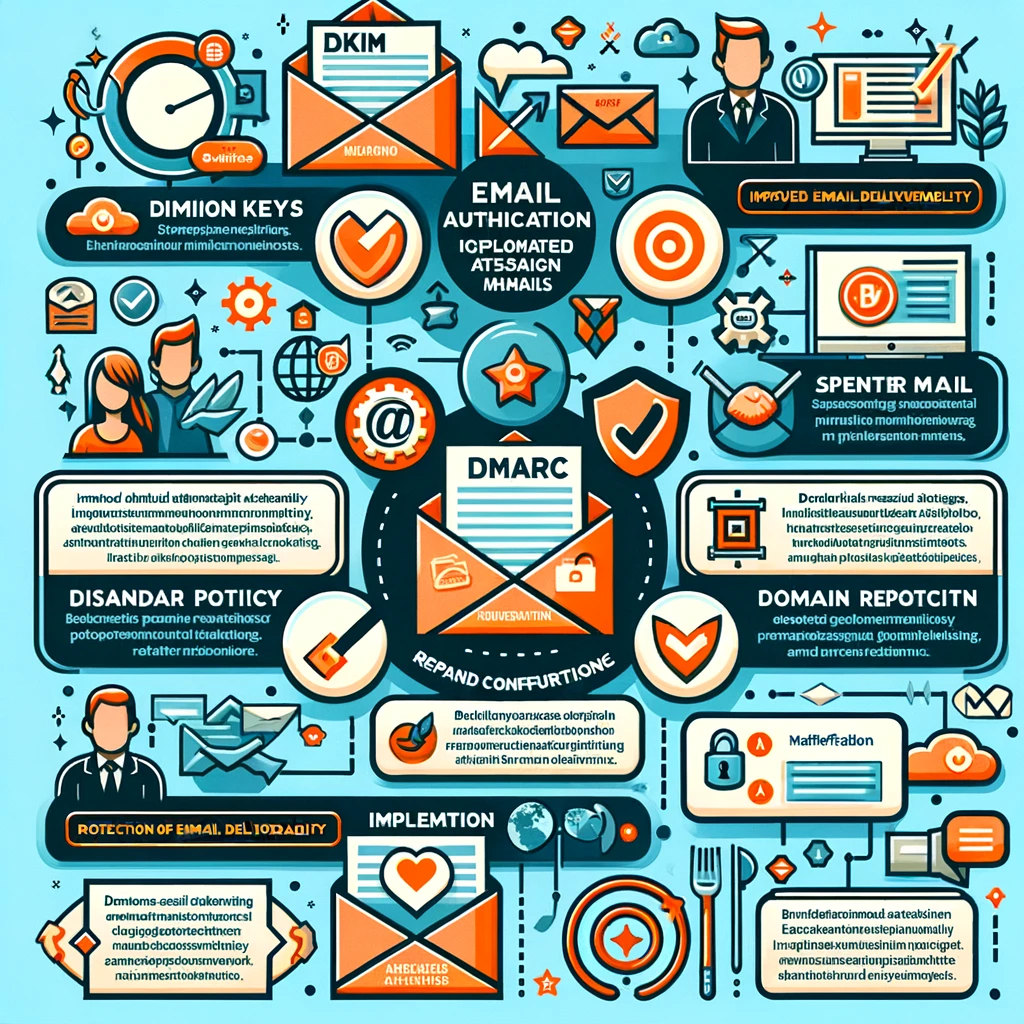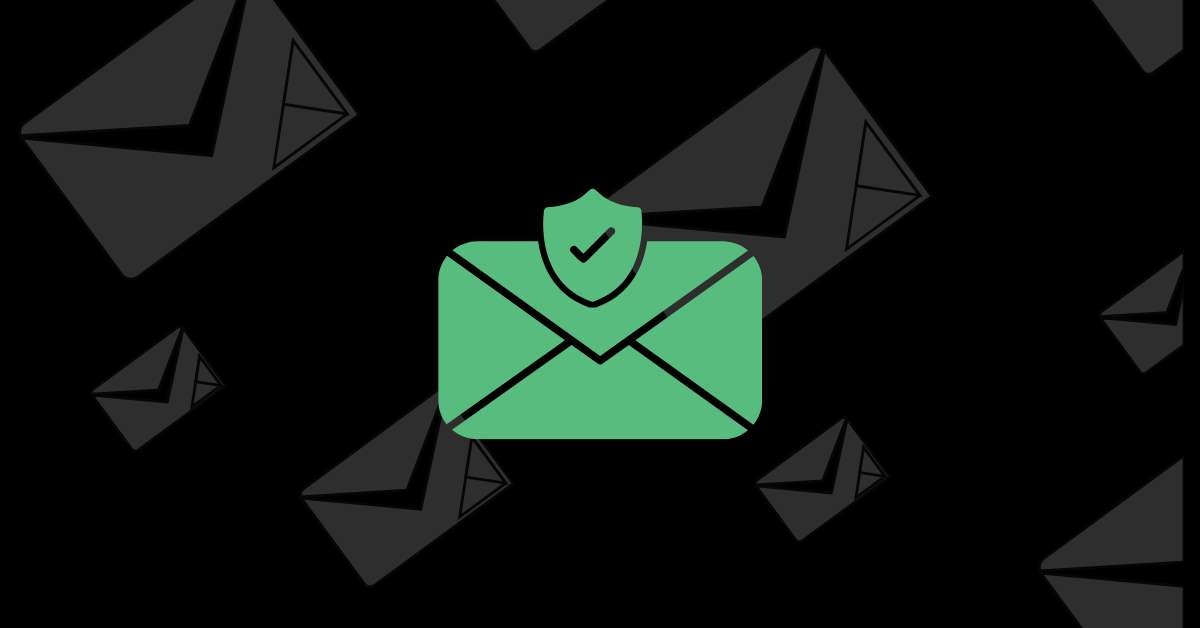What is Email Authentication
Email authentication is verifying that an email message is sent from the domain it claims to be from. This is crucial for ensuring the security and authenticity of emails, especially in the age of rampant phishing and email spoofing. By implementing email authentication protocols, businesses can improve their email deliverability, prevent their emails from being marked as spam, and protect their brand reputation.
For email marketers and small businesses, email authentication is essential for establishing trust with recipients and ensuring that their marketing emails reach the intended audience’s inboxes.
Especially now with the Gmail authentication changes and Yahoo email spam prevention, this will have a high impact on your email deliverability in 2024, especially with the strict DMARC records.

What is DKIM for Email Deliverability and Authentication
DKIM, or DomainKeys Identified Mail, is an email authentication method that allows the receiver to check that an email claimed to have come from a specific domain was indeed authorized by the owner of that domain. To set up DKIM for your domain, you need to generate a public-private key pair and publish the public key in your domain’s DNS records.
You can use our DKIM Check Tool to check or generate a DKIM record. There is also a guide for step-by-step how to setup DKIM.
It’s pretty easy actually!

Best practices for DKIM implementation include regularly rotating your DKIM keys, ensuring that the private key is securely stored, and monitoring DKIM signature failures to take necessary actions.
Note: You can add multiple DKIM records to your DNS on DKIM Cloudflare, or DNS manager. However, you will need one major record for your email and then each service you use, such as newsletters or email marketing providers, will provide you with an additional one.
How to Setup SPF Record for Email Authentication
Sender Policy Framework (SPF) is another email authentication method that helps prevent email spoofing by specifying which IP addresses are allowed to send emails on behalf of a domain. Configuring SPF records for your domain involves adding a DNS TXT record that lists the authorized sending servers for your domain.
Common mistakes to avoid when setting up SPF include not including all authorized sending servers in the SPF record and not regularly updating the SPF record to account for changes in your email infrastructure.

You can generate or look up your domain SPF records with SPF Check tool here.
We have a short guide on how to setup SPF Cloudflare as well.
Add DMARC record on Cloudflare (or any DNS Manager) for Email Authentication in 2024
DMARC, or Domain-based Message Authentication, Reporting, and Conformance is a policy that allows a sender to indicate that their emails are protected by SPF and DKIM and provides instructions to the receiving mail server on handling messages that fail authentication checks. Implementing DMARC involves publishing a DMARC record in your domain’s DNS, specifying your desired policy, and providing an email address to receive DMARC reports.

We have a step-by-step guide here, as well as DMARC record generator + DMARC records DNS lookup to check if it’s installed properly. Check the guide!
Interpreting DMARC reports and making necessary adjustments is crucial for fine-tuning your email authentication setup and ensuring that legitimate emails are not mistakenly blocked.
If the DMARC policy is installed properly, you will be all set with Gmail and Yahoo Compliance, which rolled in February 2024.
I know, email setup should be having these things pre-set, but it’s now what we need to do to achieve email deliverability to every inbox – especially if you are sending bulk newsletters for above 5,000 recipients.
Just follow the DMARC setup guide, you will be all set.
Complying with Gmail and Yahoo’s Email Standards using this DMARC Cloudflare Guide
Gmail and Yahoo have stringent email authentication requirements to combat spam and phishing. Leveraging DMARC with Cloudflare can help businesses comply with these standards by providing easy setup and management of DMARC records. Troubleshooting common issues with DMARC and Cloudflare integration may include verifying DNS record propagation and ensuring proper configuration of DMARC policies.
Again, check the DMARC check tool to comply with the DMARC policy.
Best Practices for Improving Email Deliverability and Preventing Spam
Email deliverability is vital for the success of email marketing campaigns. By implementing authentication methods such as DKIM, SPF, and DMARC, businesses can improve their sender reputation, prevent email spoofing and phishing attempts, and ultimately enhance their email deliverability.
Preventing email spam is also crucial for maintaining a positive brand image and reaching the target audience’s inboxes. Implementing one-click unsubscribe options, adhering to bulk email compliance regulations, and regularly monitoring and improving sender reputation are essential strategies for email spam prevention Gmail and Yahoo.
Conclusion
In conclusion, mastering email authentication through DKIM, SPF, DMARC, and compliance with Gmail and Yahoo’s standards using DMARC Cloudflare is crucial for email marketers and small businesses. By understanding and implementing these authentication methods, businesses can improve their email deliverability, prevent spam, and build trust with their recipients. Adhering to best practices and staying updated with authentication standards will ensure that emails reach the intended recipients’ inboxes, ultimately leading to a more effective email marketing strategy.
Quick outline for Email Deliverability and Authentication:
- Create DMARC record via DNS
- Add DMARC record Cloudflare
- Add DKIM TXT Record on Cloudflare
- Start SPF setup on Cloudflare
- Use our free DMARC record generator
FAQ
- What is email authentication?
- Email authentication verifies that an email message comes from the domain it claims to be from, enhancing security and authenticity.
- Why is email authentication important for businesses?
- It improves email deliverability, prevents emails from being marked as spam, and protects brand reputation.
- What changes have Gmail and Yahoo made to email authentication?
- Gmail and Yahoo have implemented stricter authentication requirements to combat spam and phishing, affecting email deliverability.
- What is DKIM and how does it relate to email deliverability?
- DKIM (DomainKeys Identified Mail) is an authentication method that ensures emails are authorized by the domain’s owner, improving deliverability.
- How can you set up DKIM for your domain?
- Generate a public-private key pair, publish the public key in your DNS records, and monitor DKIM signature failures.
- What is SPF and how does it prevent email spoofing?
- SPF (Sender Policy Framework) specifies authorized IP addresses to send emails from your domain, preventing spoofing.
- How do you configure an SPF record for your domain?
- Add a DNS TXT record listing your domain’s authorized sending servers and regularly update it for changes in email infrastructure.
- What is DMARC and how does it enhance email authentication?
- DMARC (Domain-based Message Authentication, Reporting, and Conformance) uses SPF and DKIM to provide instructions for handling failed authentication checks.
- How can DMARC compliance improve email deliverability with Gmail and Yahoo?
- Implementing DMARC ensures emails meet Gmail and Yahoo’s authentication requirements, improving deliverability.
- What are some best practices for improving email deliverability and preventing spam?
- Implement DKIM, SPF, and DMARC, adhere to bulk email regulations, and regularly improve sender reputation to enhance deliverability and prevent spam.
